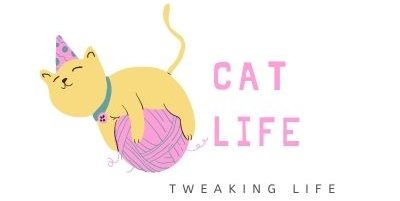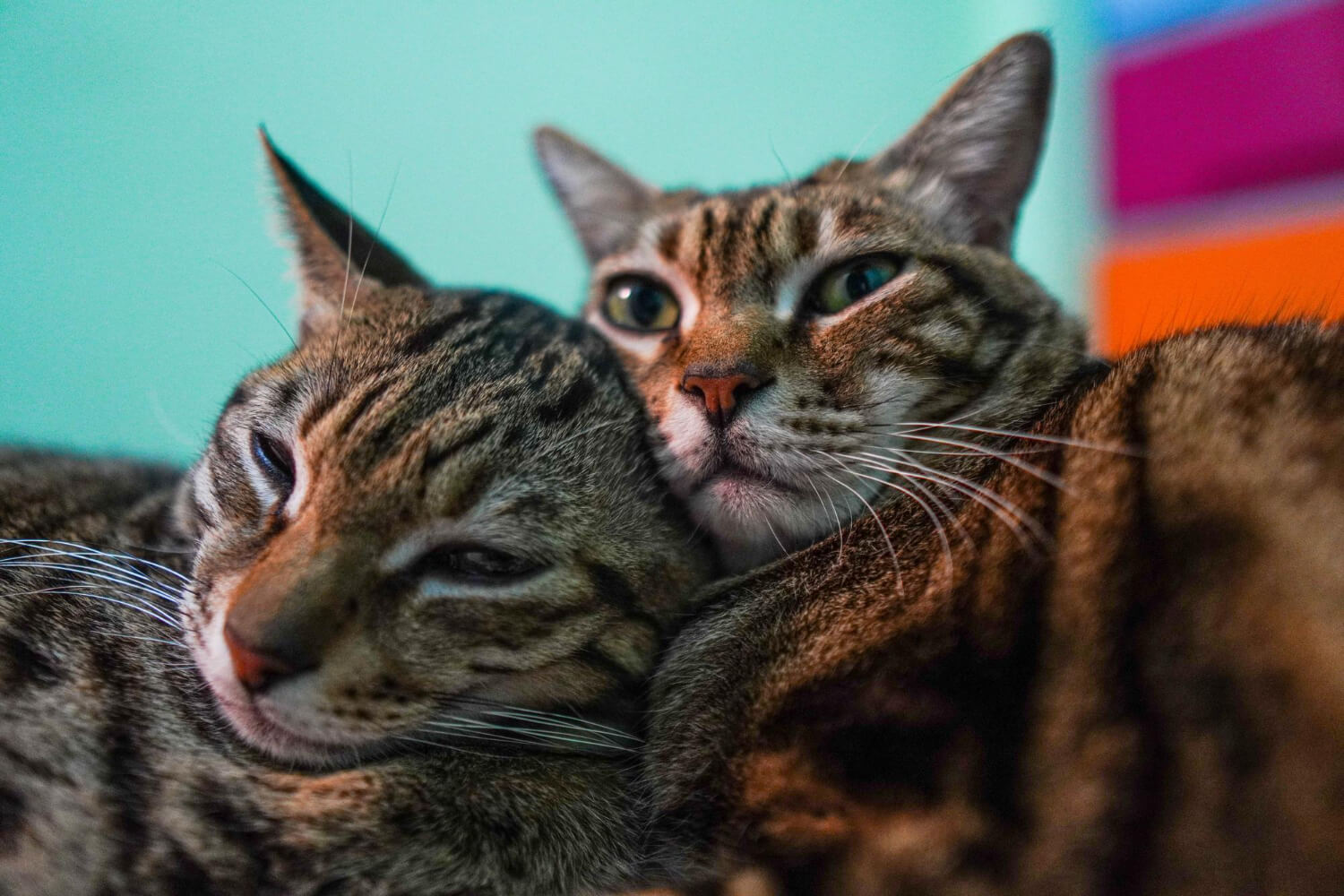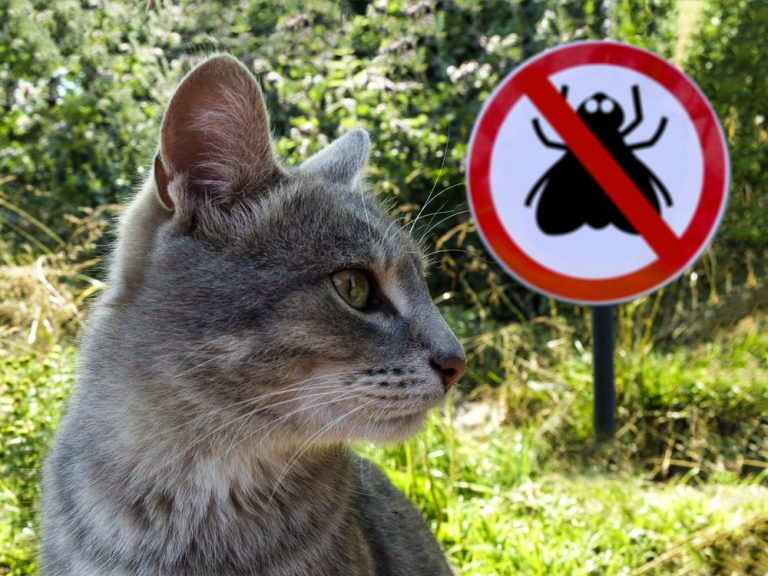Bengal Tabby Cat Mix: Is it Adorable or Nah?
Of course, it is cute! How could we ever say that a cat is not cute? Just look at how they’re sleeping, stretching, or eating. Everything about them is so adorable, and the Bengal tabby cat is not an exception.
But within the Bengal breed lies a mesmerizing range of appearances, particularly those featuring captivating rosettes and rich color combinations.
Let’s take a closer look at a Bengal tabby cat, highlighting their distinctive features and exploring everything you need to know about this beautiful cat mix.
Key Takeaways:
- Bengal tabby cats have a stunning coat adorned with beautiful spots and rosettes
- Bengals thrive on interactive play and form strong bonds with their human companions.
- Bengal tabby cats are highly trainable, responding well to positive reinforcement techniques like clicker training.
- A high-quality diet formulated for active breeds is essential to support their energy levels and muscle development.
- While relatively low-maintenance, regular brushing (1-2 times a week) is recommended to remove dead hair and maintain a healthy coat.
- Responsible breeding practices and regular veterinary check-ups are essential to address potential health issues like hypertrophic cardiomyopathy (HCM) and progressive retinal atrophy (PRA) in Bengal tabby cats.
- The Hallmark of the Bengal Tabby
- The Bengal Tabby’s Athletic Prowess
- The Bengal Tabby Cat’s Personality
- Training the Bengal Tabby Cat
- Keeping Your Bengal Tabby Cat Happy and Healthy
- Potential Health Concerns in Bengal Tabby Cats
- Responsible Breeding Practices of Bengal Tabby Cats
- The Bengal Tabby Cat: A Companion Unlike Any Other
- FAQ
The Hallmark of the Bengal Tabby
The Bengal tabby’s most striking feature is undoubtedly its coat. Unlike solid-colored cats or those with simpler tabby markings, the Bengal tabby cat boasts a mesmerizing display of spots and rosettes.
It has a rich canvas of warm tones like tawny brown, golden orange, or cream, adorned with a kaleidoscope of spots in black, chocolate brown, or a beautiful rusty brown known as cinnamon.
These spots aren’t simply random flecks of color; they coalesce into rosettes, each one a mesmerizing bullseye with a darker center and a lighter ring.

This marbled masterpiece extends beyond the body. The Bengal’s legs are adorned with stripes, adding a touch of elegance. The face is another canvas for artistry, with stripes framing the eyes, tracing the nose and whisker pads, and creating a captivating “eyeliner” effect above the eyes. The overall effect is stunning – a beautiful natural art that showcases the ancestry of the Bengal breed.
But the coat’s beauty isn’t just skin deep. The Bengal’s fur is luxuriously short and plush, with minimal undercoat. This makes grooming relatively simple, yet it doesn’t diminish the coat’s density and richness.
The Bengal Tabby’s Athletic Prowess
The Bengal’s physique is a perfect complement to its stunning coat. Imagine a medium-sized cat with a lean and muscular build, radiating an air of athleticism.
Long, slender legs propel this feline powerhouse with grace and agility. The well-rounded paws provide excellent balance and traction, allowing the Bengal to navigate vertical spaces with ease.
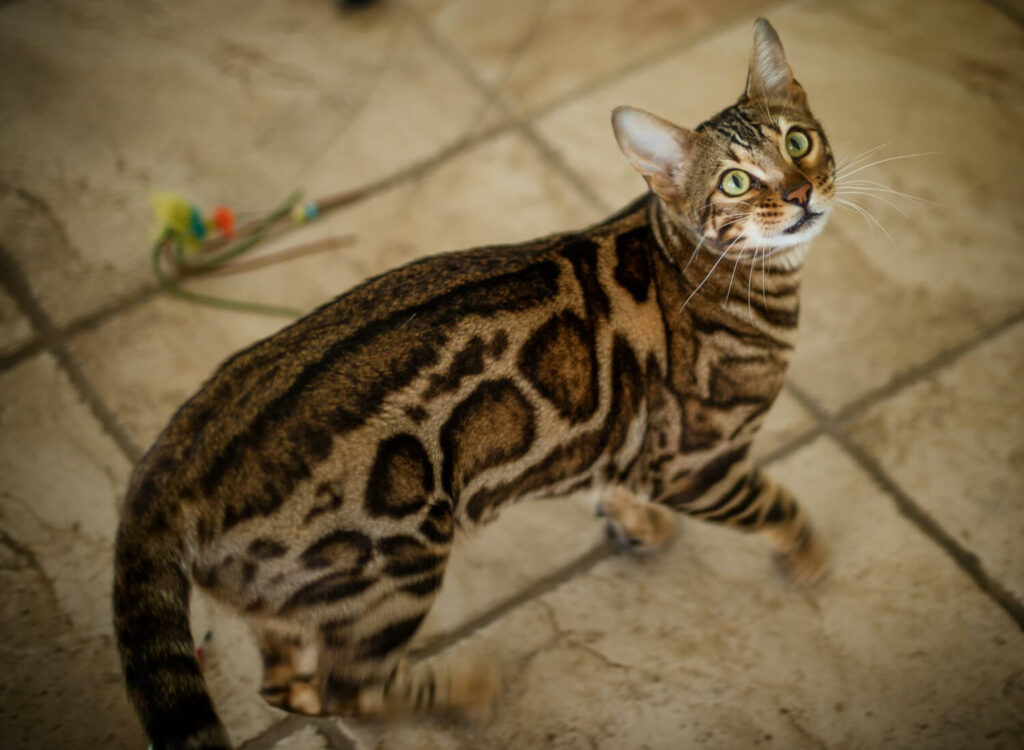
Supporting this athletic frame is a long, elegant neck that leads to a distinctive wedge-shaped head. Large, oval eyes, ranging from golden to mesmerizing shades of green, peer out from this head, brimming with intelligence and curiosity.
The forehead is slightly rounded, adding a touch of softness to the otherwise sharp features.
The overall impression is one of a powerful yet elegant predator, a captivating combination of wild ancestry and domestic refinement.
The Bengal Tabby Cat’s Personality
The Bengal’s beauty is more than skin deep; it extends to its captivating personality.
These cats are renowned for their boundless energy and playful spirit. Their intelligence shines through in their inquisitive nature and their eagerness to learn. Their curiosity knows no bounds, and they’ll happily explore every nook and cranny of their environment.
This playful spirit often manifests itself in a strong prey drive. Chasing after toys that mimic small animals or engaging in interactive games that channel their inner hunter are activities the Bengal will relish.
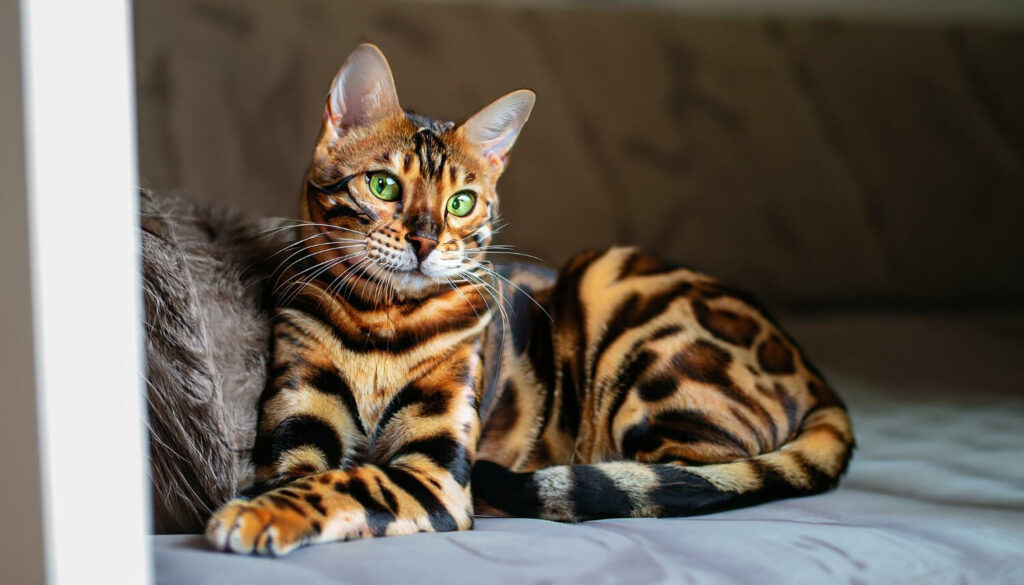
But beneath the playful exterior lies a heart overflowing with affection. Bengals form strong bonds with their families and crave human interaction. They’ll shower their loved ones with purrs and head nudges, seeking out moments of cuddles and companionship.
The Bengal’s social nature extends beyond its human companions. With proper introductions, they can thrive in households with other pets and children.
Their playful spirit and adaptability make them excellent companions for those who can provide a stimulating and loving environment.
Training the Bengal Tabby Cat
The Bengal’s intelligence makes them highly trainable. Their desire to please their humans and their keenness to learn new things make them receptive to positive reinforcement training techniques.
Clicker training, with its use of rewards for desired behaviors, is an excellent way to shape your Bengal’s behavior and teach them tricks.
Remember, training should always be a positive and rewarding experience for both you and your cat. Keep training sessions short and engaging, using treats and praise to reinforce good behavior. With patience and consistency, you’ll be amazed at what your Bengal can learn.
Keeping Your Bengal Tabby Cat Happy and Healthy
Owning a Bengal is a rewarding experience, but it comes with certain responsibilities. To ensure your feline friend thrives, you’ll need to provide for their specific needs:
- Exercise Needs: The Bengal’s energetic nature demands ample opportunities for daily exercise. Dedicate playtime sessions to engaging activities that mimic hunting behaviors. Interactive toys like feather wands, laser pointers, and puzzle feeders that dispense treats can help channel their energy and keep them mentally stimulated. Consider creating a cat gym or installing scratching posts to provide vertical spaces for climbing and exploration.
- Diet: As active felines, Bengals require a high-quality diet formulated for active breeds. Look for cat food rich in protein to support their muscle development and energy levels. Consult your veterinarian to determine the most appropriate portion sizes and discuss any dietary needs specific to your cat.
- Grooming: While the Bengal’s short coat is relatively low-maintenance, regular brushing (1-2 times a week) is essential. This removes dead hair, prevents matting, and helps distribute natural oils for a healthy and shiny coat. A gentle cat shampoo can be used occasionally, but avoid over-bathing, which can dry out the skin.
- Enrichment: A stimulated mind is a happy mind, and this is especially true for the intelligent Bengal. Provide them with a variety of toys that cater to their natural instincts. Rotate toys regularly to keep things interesting, and consider introducing puzzle feeders or food dispensing toys that challenge them mentally as they work for their meals. Offering scratching posts and climbing structures not only provides exercise opportunities but also caters to their natural scratching behavior.
Potential Health Concerns in Bengal Tabby Cats
Like all breeds, Bengal tabby cats are predisposed to certain health conditions. Here’s a look at some of the inherited conditions to be aware of:
- Hypertrophic cardiomyopathy (HCM): This is a thickening of the heart muscle that can lead to heart failure. Regular checkups with your veterinarian and screening tests like echocardiograms can help detect HCM early, allowing for appropriate management.
- Progressive retinal atrophy (PRA): This is a group of genetic diseases that can cause vision loss. Responsible breeders screen their breeding stock for PRA to minimize the risk of passing it on to offspring. Regular eye examinations by a veterinary ophthalmologist are recommended.
- Patellar luxation: This condition involves the kneecap slipping out of the joint. While mild cases may not cause significant problems, severe luxation can be painful and require surgery. If you notice your Bengal limping or favoring a hind leg, consult your veterinarian immediately.
Responsible Breeding Practices of Bengal Tabby Cats
Bengal tabby cats, like all cats, deserve to be bred responsibly. Reputable breeders will always prioritize the health and temperament of their cats. They screen their breeding stock for genetic diseases and ensure the kittens are well-socialized from a young age.
When considering a Bengal kitten, do your research and choose a breeder who prioritizes ethical practices. Ask about the kitten’s parents, their health history, and the living conditions of the cats. A reputable breeder will welcome your questions and provide you with all the necessary information about your potential feline companion.
The Bengal Tabby Cat: A Companion Unlike Any Other
The Bengal tabby cat is a captivating breed that embodies the allure of the wild with the charm of a domestic companion. Their stunning spotted coat, playful spirit, and intelligence make them a joy to own.
With proper care, attention, and understanding of their needs, a Bengal tabby cat can enrich your life for many years to come.
Owning a Bengal tabby cat is a significant commitment, and this blog post has hopefully provided you with a comprehensive understanding of this remarkable breed.
If you’re looking for an energetic, intelligent, and undeniably beautiful feline companion, the Bengal tabby cat may just be the perfect cat for you.

FAQ
Are Bengal tabby cats cuddly?
Yes! Despite their playful energy, Bengals form strong bonds with their families and love to cuddle and receive attention.
Are Bengal tabby cats easy to train?
Yes! They’re intelligent and eager to please, making them receptive to positive reinforcement training with treats and praise.
Is a Bengal tabby cat the right cat for me?
Bengals require a commitment to their specific needs for exercise, playtime, and mental stimulation. If you can provide that, a Bengal could be your perfect match!
Are Bengal tabby cats hypoallergenic?
While no cat breed is entirely hypoallergenic, Bengal tabby cats are known to produce fewer allergens than other breeds. Their short coat and minimal shedding contribute to reduced allergen levels, making them a potential option for allergy sufferers.
